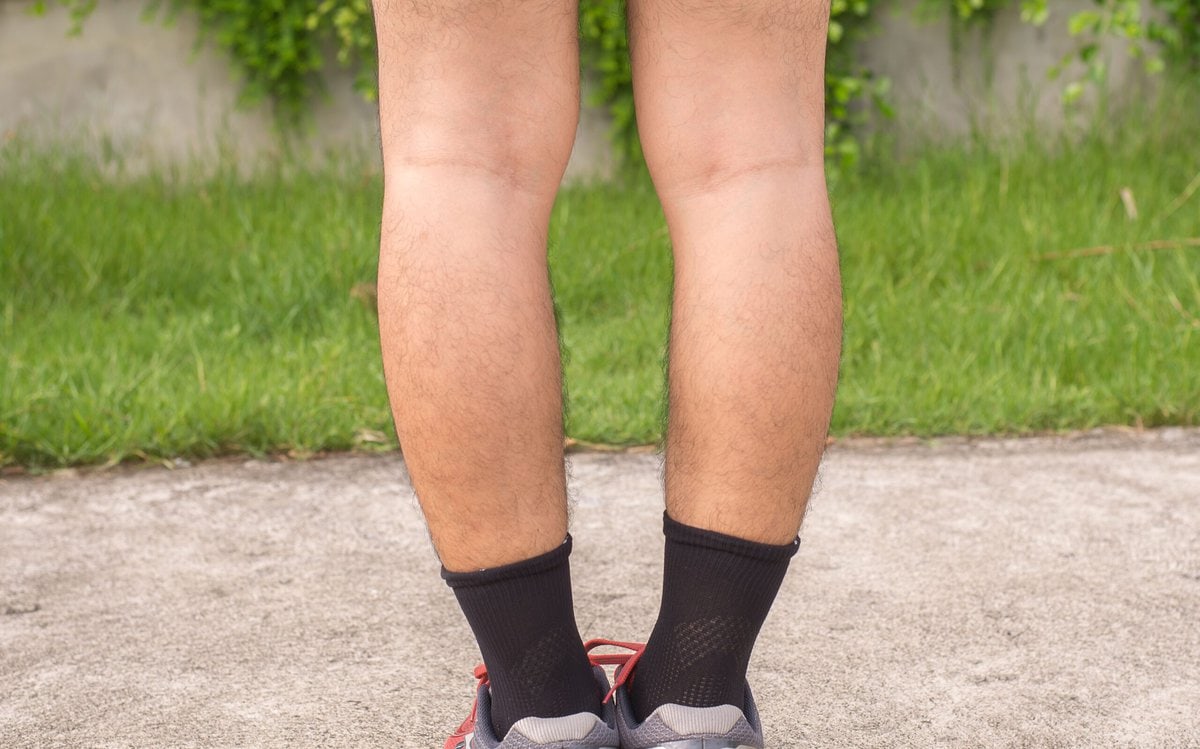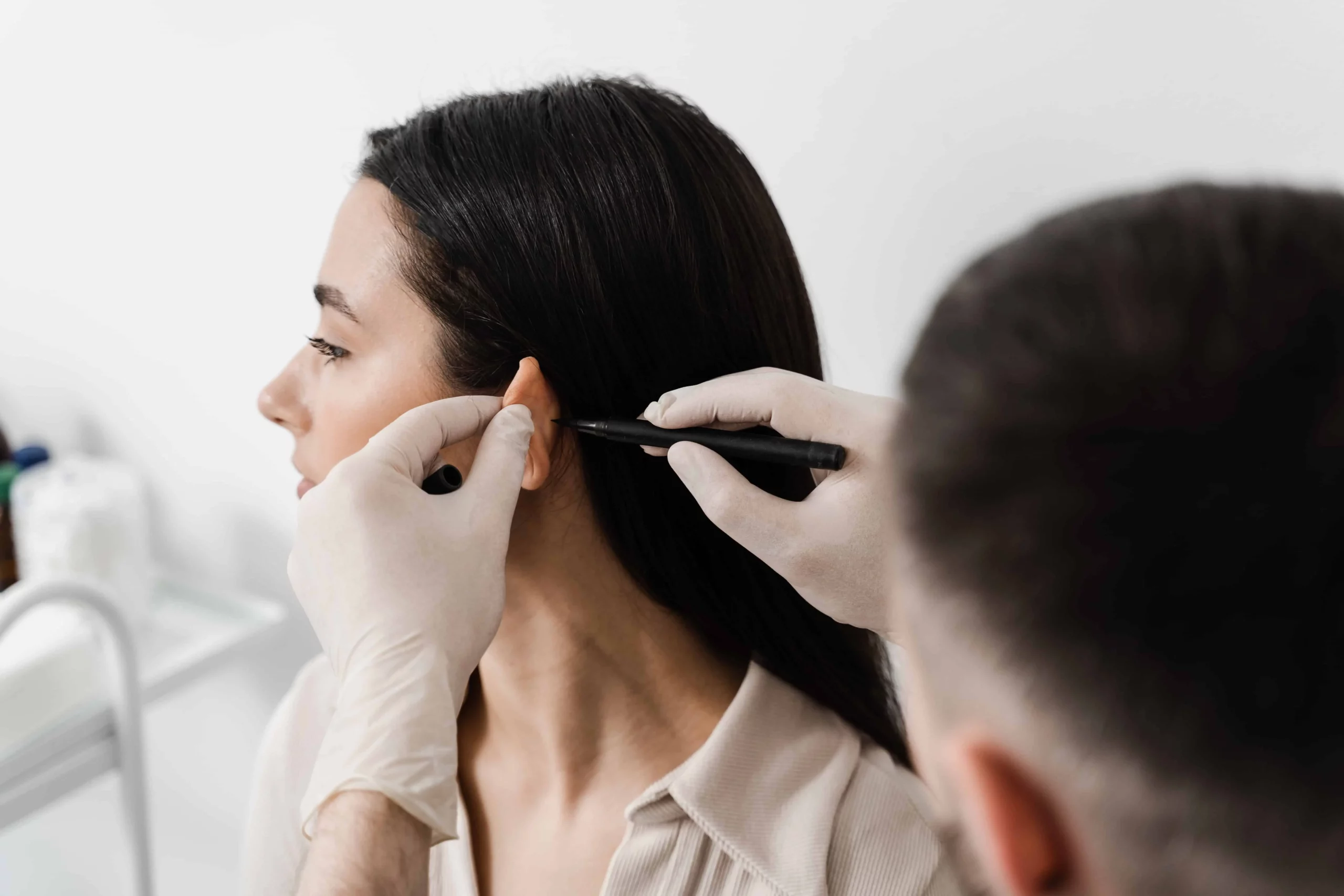Bowed legs, also known as bowlegs or bowleggedness, is a condition characterized by an outward curvature of the legs, making them appear as if the individual is straddling something while standing. This results in a noticeable gap between the knees and more so below the knees when the person stands with their feet together. In severe cases, the knees remain significantly apart, affecting the person’s physical appearance and potentially leading to mobility issues later in life.
How Do Bowed Legs Develop?
Bowed legs can develop due to various factors, heredity, congenital and acquired. While some cases are related to fetal development, others may arise from underlying medical conditions. Here are some common causes of bowed legs:
Abnormal Bone Development: Irregularities in the growth and development of bones can lead to bowleggedness. Genetic factors may play a role in these abnormalities, resulting in the bones growing in a curved rather than a straight line.
Blount’s Disease: This growth disorder of the tibia (shin bone) causes the bone to develop abnormally, resulting in a bow shape. Blount’s disease can be particularly severe and often requires surgical intervention if it progresses.
Improperly Healed Fractures: If leg fractures do not heal correctly, they can cause the bones to be bowed. This can occur due to inadequate medical treatment or complications during the healing process.
Lead or Fluoride Poisoning: Exposure to high levels of lead or fluoride can affect bone development and contribute to the condition. Chronic exposure to these substances can disrupt normal bone growth, leading to deformities.
Rickets: This condition, caused by a vitamin D deficiency, leads to the softening and weakening of bones, resulting in bowed legs. Rickets is more common in children and can be prevented with adequate nutrition and sunlight exposure.
Hereditary factors are the most common version of the condition where an individual clearly has a wide gap between the calves. This is more common than all the other groups combined and family members have a very similar presentation, yet no physical disadvantage of any kind. This group of people are simply lacking the bulk of the inner portion of the gastrocnemius muscle. These people do NOT need any bone work, just restoration or creation of the inner portion of the muscle lacking.
In some cases, severe bowlegs can lead to physical difficulties later in life, making surgical intervention necessary. Additionally, the cosmetic appearance of bowed legs can severely impact self-esteem, especially in children who may face teasing from peers.
Approximately 95% of patients with bowed leg conditions do not have bone problems. Instead, the appearance of bowed legs is often due to a disproportionate distribution of muscle in the lower portion of the legs. This disproportion can create the perception of bowed legs even though the bones are absolutely normal. Frequently, this condition is hereditary, meaning it runs in families and can be passed down from generation to generation.
Impact on Daily Life
The impact of bowed legs in the bone deformity group on an individual’s daily life can be significant. People with severe bowlegs may experience pain and discomfort while walking or standing for extended periods. The abnormal gait can also lead to increased wear and tear on the joints, potentially causing arthritis or other joint-related issues as they age.
Moreover, the psychological effects of bowlegs can be profound. Children and adolescents with noticeable bowing may be subject to bullying and social ostracism, leading to lowered self-esteem and confidence. Even adults may feel self-conscious about their appearance, avoiding activities or clothing that highlight their legs.
Treating Bow-Legged Patients with Plastic Surgery
Individuals with bony problems need to have Orthopedic involvement and have their bones set in proper alignment. For mild cases of bowleggedness, non-surgical treatments such as special shoes, braces, or casts may be recommended to straighten the legs. These methods can help guide bone growth in young children, potentially correcting the condition over time. However, when these measures are insufficient, and the condition persists into adolescence or adulthood, plastic surgery may be considered.
The Surgical Procedure
Plastic surgery for correcting bowed legs, especially when the condition affects the lower legs, can provide highly effective and permanent results. Dr.Leonard Grossman, a renowned plastic surgeon from NYC, invented this remarkable procedure in 1995. He has performed this procedure on thousands of men and women since then, leaving scar-less and permanent results.
Dr. Grossman’s innovative technique involves addressing the lack of muscle bulk in the inner portion of the lower legs, which is often the underlying cause of the bowed appearance. The process of correction involves the following steps:
- Assessment: Dr. Grossman begins by evaluating the patient’s condition to determine if they are a suitable candidate for surgery. This involves a detailed physical examination and possibly imaging studies to understand the extent of the bowing and level of correction.
- Fat Harvesting: Fat is harvested from areas of the body where it is not desired and where the stem cell count is naturally high. Common donor sites may include the abdomen, saddle bags and the waistline. This fat is then processed to preserve the maximum number of live stem and fat cells.
- Fat Injection: Fat Grafting or Transfer is done by using specialized cannulas. The processed fat is injected into the required portions of the calf or ankle. This bulks up the area, bringing the proportions of the legs to a more natural appearance. The precise placement of the fat and stem cells ensures symmetry and a smooth contour.
- Post-Procedure Care: After the procedure, patients may experience some swelling and tightness in the lower legs, but everyone can walk immediately. Bruising, if it occurs, typically resolves within a few weeks. Dr. Grossman provides detailed aftercare instructions to ensure optimal recovery and long-lasting results.
- The procedure is minimally invasive, and because it uses the patient’s own fat, it avoids the need for implants and reduces the risk of complications. The results are both permanent and scar-less, offering a significant improvement in the aesthetic appearance of the legs.
Benefits of the Procedure
The benefits of Dr. Grossman’s technique extend beyond just the correction of bowleggedness. By using the patient’s own fat, the procedure enhances the natural contour of the legs, making them appear fuller and more proportionate to the rest of the body. Additionally, since the fat is rich in stem cells, it promotes better integration and longevity of the results.
Patients who undergo this procedure often report a significant boost in self-confidence. The improved appearance of their legs allows them to wear a wider variety of clothing, participate in more activities, and feel less self-conscious in social situations. The minimally invasive nature of the surgery also means a shorter recovery time and less discomfort compared to the more traditional surgical methods.
What to Expect from the Procedure
Patients considering bowlegged plastic surgery can expect a comprehensive consultation process. Dr. Grossman offers in-person and virtual consultations, including Google Meet, Facetime or Zoom evaluations for out-of-town patients. During the consultation, he will assess the severity of the condition and discuss the best options for cosmetic treatment.
The surgery is performed precisely to ensure symmetry and an aesthetically pleasing outcome. Recovery is typically quick, with minimal downtime, allowing patients to resume their normal activities shortly after the procedure.
Permanent and Scar-less Results
With decades of experience and thousands of patients treated, Dr. Grossman’s Fat transfer technique has proven to deliver reliable and satisfying results. Using the patient’s fat and stem cells not only corrects the bowed appearance but also enhances the overall contour of the legs without leaving visible scars.
In Dr. Grossman’s hands, patients exhibit nearly 100% of fat graft survival. In fact patients who wish to grow more muscle bulk now can do so through physical exercise.
Conclusion
Bowed leg surgery offers a viable solution for individuals suffering from the physical and psychological impacts of bowleggedness. Dr. Leonard Grossman’s innovative approach provides a minimally invasive, effective, and permanent correction of the condition, improving both the appearance and function of the legs. For those considering this procedure, a thorough consultation with Dr. Grossman can help determine the best course of action to achieve the desired results.
Whether you are local to New York or traveling from out of state or even abroad, Dr. Grossman and his team are equipped to provide comprehensive care and support throughout the process. If you have been living with bowed legs and are seeking a solution to enhance your appearance and quality of life, minimally invasive bowlegged plastic surgery may be the answer you have been looking for.
Contact Dr. Grossman today to learn more about the procedure and determine if it is right for you. You can explore the options available through an initial consultation and evaluation and take the first step towards achieving straighter, more aesthetically pleasing legs. The journey to improved self-confidence and comfort begins with a simple phone call or message, setting you on the path to a life free from the physical and emotional challenges posed by bowed legs.



